#Senator Barry Goldwater
Photo

To all the republican, right-wing crazies out there right now, particularly those in Arizona, who claim the mantle of conservatism, consider the above quote, then consider another quote from Goldwater, this godfather of republican conservative politics. Goldwater made this statement in November 1994, and was quoted in John Dean, Conservatives Without Conscience (2006):
“I think every good Christian ought to kick Falwell right in the ass.” John Dean alleged that Goldwater actually suggested that good Christians ought to kick Falwell in the "nuts", but the news media "changed the anatomical reference." According to Dean, "I know because I was there when he said it," in his piece, Broken Government: How Republican Rule Destroyed the Legislative, Executive, and Judicial Branches.
4 notes
·
View notes
Text


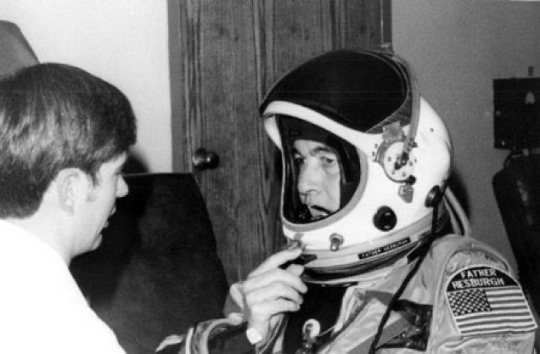

HOW A CATHOLIC PRIEST GOT CLOSER TO HEAVEN
The actual unofficial top speed of the SR 71 is 3.52. This happened because of the urgings of a Catholic priest!
SR-71 pilot Tom Allison said, “My God, Padre, what more do you want?
I came within 5 degrees of burning up this entire airplane! “What more do you want? The Father wanted to make sure that he broke the official record of the fastest speed in the SR 71 that’s what he wanted. Father Hesburgh was used to asking for a lot and getting it. Father Theodore Hesburgh, President of Notre Dame, was an aviation buff. He was hooked after a flight in a barnstormer’s stunt plane at the age of 10 that his Dad paid five dollars for. In his autobiography, he wrote that He has logged nearly three million miles in the air, flying in exotic aircraft such as an F14-Tomcat, a Torpedo Bomber, a Weather Plane, and many more. He also broke the sound barrier several times, flew into a volcanic crater, and piloted a naval bomber over the Pacific despite having no formal flight training. But he wanted more. The ultimate prize would be to fly in the world's fastest airplane and break the current record. That record was set in 1976 at 2193 mph.
President Carter was thanking the Roman Catholic priest for his Goodwill accomplishments; he asked Hesburgh is there anything I could do for you? President Carter recalled the moment Hesburgh asked for the favor: “I said, ‘Fr. Hesburgh, it’s not customary for civilians to ride on a top-secret airplane.’
He said, ‘That’s all right. I thought you were Commander-in-Chief.’”
Two days later, Hesburgh got a call from the Air Force’s chief of staff. He was to report to the Beale Air Force Base, CA, to undergo a training regimen and series of rigorous tests. After passing the physical and psychological examinations administered to astronauts, Hesburgh had to learn how to operate every instrument in the back seat: navigational equipment, radios, and dozens of gauges and meters. He was then put through situational training for various emergency scenarios, including ejection and equipment failure. Father Hesburgh was possibly the oldest VIP to get a ride in the SR 71. He was 61. A close rival for this title would be Senator Barry Goldwater. He was 60 when he got his VIP ride in 1969.
On February 28, 1979, Hesburgh and the pilot, Major Tom Allison, prepared for their attempt to break the Blackbird’s speed record. The priest wanted to push it to the limit..
After cruising at 30,000 feet just under the speed of sound, Allison and Hesburgh dove 5,000 feet and broke the sound barrier. They then turned their nose upwards and rocketed past 80,000 feet, accelerating through Mach 3. As Hesburgh watched the speedometer, the Blackbird pushed past 2,200 miles per hour, breaking the plane’s speed record.
In his autobiography, Hesburgh said that when he’d landed, he “asked Tom if he had pushed the plane as fast as it would go.” Allison responded, “My God, Padre, I went within five degrees of burning us up. What more do you want?”
Hesburgh fulfilled a lifelong dream — he set an unofficial airspeed record in the world’s fastest airplane, an SR-71 Blackbird. This became the Father's proudest accomplishment, a story that he told over and over again to his friends. This is a truly remarkable story about a man who asked for an almost impossible task and received it!
Written by Linda Sheffield
@Habubrats71 via X

13 notes
·
View notes
Text

Ham Radio & More was a radio show about amateur radio that was broadcast from 1991 through 1997. More than 300 episodes of the program are now available online as part of the Digital Library of Amateur Radio & Communications (DLARC).
Ham Radio & More was the first radio show devoted to ham radio on the commercial radio band. It began as a one-hour show on KFNN 1510 AM in Phoenix, Arizona, then expanded to a two-hour format and national syndication. The program’s host, Len Winkler, invited guests to discuss the issues of the day and educate listeners about various aspects of the radio hobby. Today the episodes, some more than 30 years old, provide an invaluable time capsule of the ham radio hobby.just some of the HR&M cassette tapes
Len Winkler said, “I’m so happy that the Digital Library of Amateur Radio & Communications took all my old shows and made them eternally available for everyone to hear and enjoy. I had the absolute pleasure, along with a few super knowledgeable co-hosts, to interview many of the people that made ham radio great in the past and now everyone can go back and listen to what they had to say. From the early beginnings of SETI (search for extraterrestrial intelligence) to Senator Barry Goldwater to the daughter of Marconi. So much thanks to the Digital Library of Amateur Radio & Communications for doing this amazing service.”
Other interviewees included magazine publisher Wayne Green, Sheriff Joe Arpaio, Bob Heil, Bill Pasternak, Fred Maia, and other names well known to the amateur radio community. Discussion topics spanned the technical, such as signal propagation, to community issues, including the debate over the Morse code knowledge requirement for ham radio operators—a requirement eventually dropped, to the benefit of the community.
The radio programs were recorded on cassette tapes when they originally aired. Winkler digitized 149 episodes of the show himself in 2015 and 2016. The digitizing project paused for years. In January 2024 he sent the remaining cassettes to DLARC. Using two audio digitizing workstations, we digitized another 165 episodes in about three weeks. The combined collection is now available online: a total of 464 hours of programming, most of which have not been heard since their original air date. The collection represents nearly every episode of the show: only a few tapes went missing over the years or were unrepairable.
The Digital Library of Amateur Radio & Communications is funded by a grant from Amateur Radio Digital Communications (ARDC) to create a free digital library for the radio community, researchers, educators, and students. DLARC invites radio clubs and individuals to submit material in any format. To contribute or ask questions about the project, contact: Kay Savetz at [email protected] or on Mastodon at [email protected].
6 notes
·
View notes
Text

THE SOUTHERN STRATEGY
20th Century US History Lesson
From Wikipedia:
In American politics, the Southern strategy was a Republican Party electoral strategy to increase political support among white voters in the South by appealing to racism against African Americans.[1][2][3] As the civil rights movement and dismantling of Jim Crow laws in the 1950s and 1960s visibly deepened existing racial tensions in much of the Southern United States, Republican politicians such as presidential candidate Richard Nixon and Senator Barry Goldwater developed strategies that successfully contributed to the political realignment of many white, conservative voters in the South who had traditionally supported the Democratic Party. It also helped to push the Republican Party much more to the right relative to the 1950s.[4]…(please click to continue reading how the GOP accomplished this)
32 notes
·
View notes
Text

On this day in 1974 (H/t Mary Elaine LeBey)
* * * * *
LETTERS FROM AN AMERICAN
August 9, 2023
HEATHER COX RICHARDSON
New York Times journalists Maggie Haberman, Charlie Savage, and Luke Broadwater yesterday reported that in a memo dated December 6, 2020, Trump lawyer Kenneth Chesebro laid out a plan to overturn the results of the 2020 presidential election that he acknowledged was “a bold, controversial strategy” that he believed the Supreme Court would “likely” reject.
Still, he presented the plan—while apparently trying to distance himself from it by writing “I’m not necessarily advising this course of action”—because he thought it “would guarantee that public attention would be riveted on the evidence of electoral abuses by the Democrats, and would also buy the Trump campaign more time to win litigation that would deprive Biden of electoral votes and/or add to Trump’s column.”
The plan was essentially what the Trump campaign ultimately tried to pursue. It called for Trump-Pence electors in six swing states Biden had won to meet and vote for Trump, and then to make sure that in each of those states there was a lawsuit underway that “might plausibly” call into question Biden’s victory there. Then, Vice President Mike Pence would take the position that he had the power not simply to open the votes but also to count them, and that the 1887 Electoral Count Act that clarified those procedures was unconstitutional.
Key to selling this strategy, Chesebro wrote, was messaging that constructing two slates of electors was “routine,” and he laid out a strategy of taking events and statements out of context to suggest support for that messaging.
This was, of course, a plan to deprive American voters of their right to have their votes counted, as the federal grand jury’s recent indictment of former president Trump charged, but Chesebro concluded: “it seems advisable for the campaign to seriously consider this course of action and, if adopted, to carefully plan related messaging.”
Three days later, Chesebro wrote specific instructions to create those fraudulent electors, and they were off to the races.
Chesebro is identified as Co-Conspirator 5 in the grand jury’s recent indictment of Trump.
It is an astonishing thing to read this memo today.
Forty-nine years ago, on August 9, 1974, President Richard Nixon wrote one line to Secretary of State Henry Kissinger: “I hereby resign the Office of President of the United States.” In late July the House Judiciary Committee had voted to recommend articles of impeachment against the president for obstruction of justice, abuse of power, and contempt of Congress for his attempt to cover up the involvement of his people in the June 1972 burglary of the Democratic National Committee headquarters at the Watergate Hotel in Washington, D.C.
The Watergate break-in was part of the Nixon campaign’s attempt to rig the 1972 election, in this case by bugging the Democrats’ headquarters, and Republicans wanted no part of it. When the White House produced a “smoking gun” tape on August 5, revealing that Nixon had been in on the cover-up since June 23, 1972—and implying that he had been in on the bugging itself—those Republicans who had been defending Nixon abandoned him.
On the night of August 7, 1974, a group of Republican lawmakers led by Arizona senator Barry Goldwater met with Nixon in the Oval Office and told him that the House as a whole would vote to impeach him and the Senate would vote to convict. Nixon decided to step down.
Although Nixon did not admit any guilt, maintaining he was resigning only because the time it would take to vindicate himself would distract from his presidential duties, his replacement, Gerald R. Ford, granted “a full, free, and absolute pardon” to Nixon “for all offenses against the United States which he…has committed or may have committed or taken part in during the period from January 20, 1969, through August 9, 1974.”
Ford said that the trial of a former president would “cause prolonged and divisive debate over the propriety of exposing to further punishment and degradation a man who has already paid the unprecedented penalty of relinquishing the highest elective office of the United States.”
Only fifteen years later, the expectation that a president would not be prosecuted came into play again when members of President Ronald Reagan’s National Security Council ignored Congress’s 1985 prohibition on aid to the Nicaraguan Contras who were fighting against the socialist Nicaraguan government. The administration illegally sold arms to Iran and funneled the profits to the Contras.
When the story of the Iran-Contra affair broke in November 1986, government officials continued to break the law, shredding documents that Congress had subpoenaed. After fourteen administration officials were indicted and eleven convicted, the next president, George H. W. Bush, who had been Reagan’s vice president, pardoned them on the advice of his attorney general William Barr. (Yes, that William Barr.)
The independent prosecutor in the case, Lawrence Walsh, worried that the pardons weakened American democracy. They “undermine…the principle…that no man is above the law,” he said. Pardoning high-ranking officials “demonstrates that powerful people with powerful allies can commit serious crimes in high office, deliberately abusing the public trust without consequences.”
Walsh’s warning seems to be coming to life. The Republican Party now stands behind a man whose legal troubles currently include indictment on 40 counts for taking and hiding classified national security documents and on four counts of trying to steal an election in order to stay in power.
LETTERS FROM AN AMERICAN
HEATHER COX RICHARDSON
#Nixon Resigns#Mary Elaine LeBey#history#Heather Cox Richardson#Letters From an American#Nixon#Republicans#presidential pardons#republican wrongdoing#justice#rule of law
13 notes
·
View notes
Text




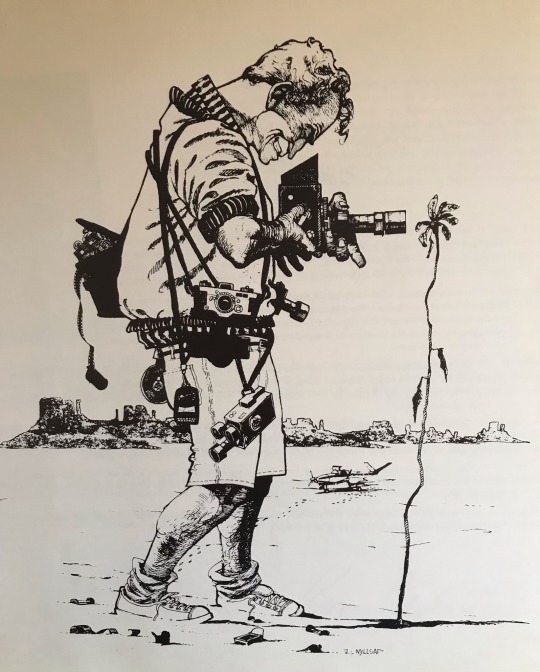
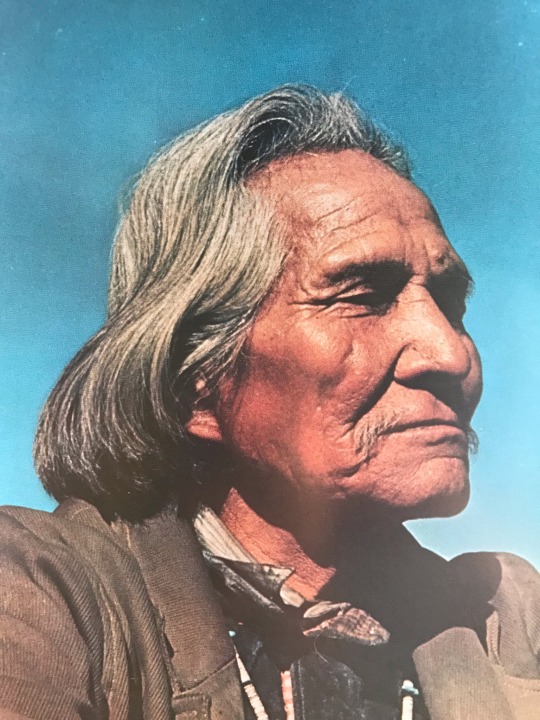
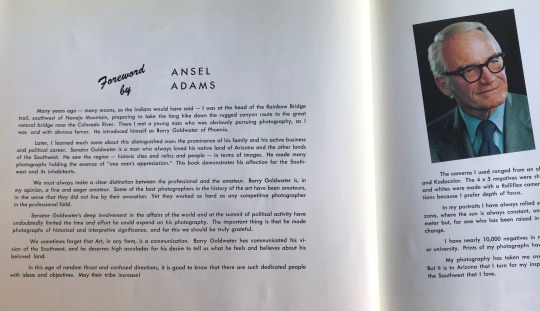
The photography of Senator Barry Goldwater: Endorsed by Ansel Adams.
15 notes
·
View notes
Text
"The Trilateral Commission is international. . . . It is intended to be the vehicle for multi- national consolidation of the commercial and banking interests by seizing control of the political government of the United States." Senator Barry Goldwater
13 notes
·
View notes
Photo

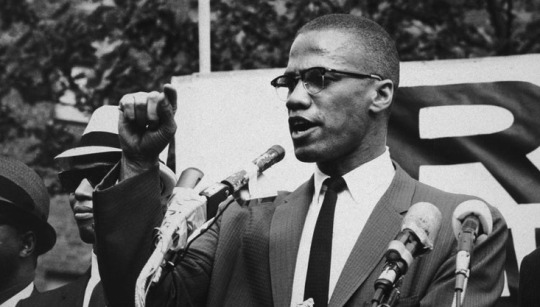

youtube
The Ballot Or The Bullet - Malcolm X

THE NAMES HAVE BEEN CHANGE BUT THE STORY IS STILL THE SAME
BROTHER MALCOLM X MADE THIS SPEECH IN THE 60′S IN THE 20TH CENTURY. HERE WE ARE IN THE 21TH CENTURY AND IF YOU CLOSE YOUR EYES AND EXCHANGE SOME NAMES, YOU WOULD KNOW THIS SPEECH IS FRESH TODAY - BOTH SIDES DIFFERENT NAME BUT ARE STILL THE SAME.
DIXIECRATS - DID YOU KNOW ABOUT THEM?
Dixiecrats and the “Southern Strategy” was born. At the 1948 Democratic National Convention, a group led by Senator Hubert Humphrey of Minnesota proposed some controversial new civil rights planks of racial integration and the reversal of Jim Crow laws to be included in the party platform.
Southern Democrats were dismayed. President Harry S. Truman was caught in the middle for his recent executive order to racially integrate the armed forces. As a compromise, he proposed the adoption of only those planks that had been in the 1944 platform.
That was not enough for the liberals. Truman's own civil rights initiatives had made the civil rights debate unavoidable. The planks were adopted and 35 southern Democrats walked out in protest. They formed the States' Rights Democratic Party, which became popularly known as the Dixiecrats.
Their campaign slogan was “Segregation Forever!” Their platform also included “states’ rights” to freedom from governmental interference in an individual's or organization's prerogative to do business with whomever they wanted.
Clearer political and ideological lines began to be drawn between the Democrat and Republican parties as moderates and liberals converted from Republican to Democrat. Conservatives in the Democratic Party began to move to the increasingly conservative Republican Party. Meeting in Birmingham, Alabama, the Dixiecrats nominated South Carolina governor Strom Thurmond as their presidential candidate. (NOTE BIDEN WAS MENTORED BY STROM THURMOND) CNN FACT CHECK Biden on his past praise of segregationist senators - click the link to read
They remained in the Democratic fold, restive, until the candidacy of Republican conservative Barry Goldwater liberated them in 1964 by refreshing some of the Dixiecrat ideologies and therefore accelerated the transition from a solid South for the Democrats to one for the Republicans. Strom Thurmond switched to the Republican Party that year and remained there until his death in December 2003. Other presidential candidates, such as Republican Richard M. Nixon in 1968, have effectively used the Southern strategy of "states' rights" and racial inequality to garner votes from the racially conservative electorate in the southern states. Excerpt Dixiecrats by US history.com
Letters: The old Dixiecrat racists are now the Republican obstructionists of today - click link for complete story
The party was dominated by Dixiecrats and they were the Democrats of the past. Many members of today's Democratic Party were prevented from voting. When they finally received help from the voting rights bills of the 1960s, the Dixiecrats started their move from Democrat to Republican. We now have a Republican Party that has taken on the old tried and true model of the Dixiecrats. (excerpt)
BLACK PARAPHERNALIA DISCLAIMER - PLEASE READ
5 notes
·
View notes
Photo

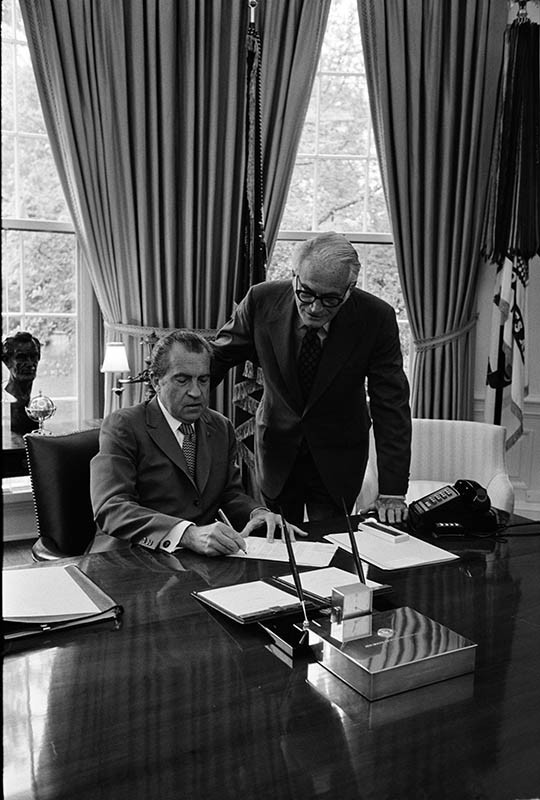
#Nixon50 #OTD 5/3/1973 President Nixon signed a letter designating Senator Barry Goldwater as the President's Personal Representative to the 1973 Paris Air Show. The Senator then presented the President with an Air Force Association’s award, which Goldwater explained was given each year to the person the Association felt had done the most for the country. (Images: WHPO- E0745-05 & 10)
5 notes
·
View notes
Text
17 Curious Facts About Cincinnati Chili
A Spicy Century
This year marks the centennial of Cincinnati-style Chili. It was October 24, 1922 when Athanas (“Tom”) and Ivan (“John”) Kiradjieff opened their Empress Chili Parlor, the first ever to serve what we call Cincinnati Chili, at 816 Vine Street, tucked inside the Empress Burlesk Theater.
No Chocolate
A great many Cincinnatians inaccurately yet vehemently insist that the secret ingredient to Cincinnati Chili is chocolate. Most “authentic” Cincinnati Chili recipes in print or online make this claim. The myth may be traced to Marion Rombauer Becker, who took over compiling the “Joy of Cooking” on the death of her mother, Irma Rombauer. Marion’s 1970s “Cincinnati Chili Cockaigne” recipe (the “Cockaigne” label signaled that the Rombauer’s served that dish at their home in Cincinnati) was the first to claim a dubious role for chocolate.

Solons Debate
Cincinnati Chili had its day at the United States Senate in 1974. It is generally acknowledged that the Great Chili Debate commenced when Senator Barry Goldwater (R-Ariz) took umbrage at the menu of the National Press Club, who had slipped “real Texas chili” onto the club’s dinner offerings. Goldwater asserted that Arizona chili was superior. Senator John Tower (R-Tex) rebutted and the debate was on. Senator Robert A. Taft Jr. (R-Oh), put both Texas and Arizona in their place with a speech on the floor of the upper house in which he asserted, “Each (Tower and Goldwater) likened the other chili to barnyard apples and possibly both spoke truly. The only real chili comes from Cincinnati, Ohio.”
An Anthropologist Weighs In
In 1981, an anthropologist who was then employed by the Ohio Arts Council, Timothy Charles Lloyd, published a scholarly paper in the Western Folklore journal titled "The Cincinnati Chili Culinary Complex" as part of a special issue on "foodways." He includes a chart illustrating the differences among three Cincinnati Chili recipes. Lloyd specialized in folklore and he celebrated, in his 13-page paper, Cincinnati Chili as a success story in regional foodways in a time of mass production and homogenous grocery inventories.
Why Chili?
Much of the Cincinnati versus Texas debate hinges on definitions. Texans claim the Queen City concoction is anything but chili, and they have a point. When our Greek-Macedonian chefs began preparing their signature dish, Cincinnati already boasted several eating establishments serving chili con carne. Calling the new dish “that meat sauce we made back home” wouldn’t fly, so they called it chili. To Cincinnati’s Germans, any spicy meat sauce was “chili.” Well into the 1950s, Skyline boasted that it served “genuine chili con carne.”
Greek Lasagna
Well, what is “that meat sauce we made back home”? Dann Woellert points out that there is no dish in any of the Balkan countries that is identical to Cincinnati Chili. The closest analog, he says, is pastitsio or pastichio, a sort of Greek lasagna with a meat sauce poured over a macaroni-like pasta and topped by a cheese or béchamel sauce.
(If it’s any consolation, Woellert also notes that there is nothing exactly like goetta in Germany, either.)
Oldest Skyline
As in real estate, chili parlors rely on location, location and location. It is common for a chili parlor to pack up and move to greener pastures. Although the restaurant took its name from a burlesque theater, Empress Chili soon moved to Fifth Street. Only one of the 11 Skyline Chili locations listed in a 1968 advertisement remains in operation. That’s the legendary Clifton location at 290 Ludlow Avenue, at the same location since September 1966, earning honors as the oldest location in the Skyline chain.
Cincinnati Recognizes Its Treasure
The earliest mention I have found for “Cincinnati Chili,” meaning the Macedonian meat sauce we all know and love, appeared in a 9 May 1958 Cincinnati Enquirer column by reporter Jerry Ransohoff, titled “Man That Kitchen.” Ransohoff acknowledges that Empress is the mother of all chili parlors and provides a recipe that he admits isn’t really close to anything actually served in any of Cincinnati’s chili parlors. (Ransohoff’s recipe includes no chocolate.)
Chili High School
A fair number of Cincinnati’s chili pioneers gravitated to the Western Hills, as evidenced by the number who hold diplomas from Western Hills High School. Dann Woellert, in his “The Authentic History of Cincinnati Chili” lists three of Skyline Chili’s Lambrinides brothers – Bill, Chris and John – plus Joe Kiradjieff of Empress, Steve Andon of Camp Washington Chili and a host of their spouses and relatives as former Mustangs.
An Archeologist Speaks
When Senator Bob Taft lectured the United States Senate about the virtues of Cincinnati Chili, he relied heavily on an article from the May 1973 issue of Holiday magazine, written by a young history professor at Princeton University named S. Frederick Starr. It was not Starr’s first publication. The young professor, who was later named president of Oberlin College, published a book, “The Archaeology of Hamilton County, Ohio” in 1960 while still a high school student.
Together For Eternity
There is a lot of Cincinnati Chili history interred in Spring Grove Cemetery, specifically in Section 127, up in the northwestern hills along the yellow driveway. Dann Woellert tallies the Kiradjieff brothers (Empress), the Lambrinides family (Skyline), the Manoff family (Strand, Tip Top and Hamburger Heaven, later known as Gold Star), the Chalkedas family (ABC Chili) and others memorialized there.
A Texas Comedian Opines
On his 2003 album, “Drunk In Public,” comedian Ron White riffs on Cincinnati’s chili obsession. In his routine, he lists Skyline, Gold Star, Liberty, Ray’s, Joe’s, and Bob’s chili parlors. The first two are obvious, the last three fictionally humorous, but there used to be a Liberty Chili Parlor in Covington and the Liberty Restaurant in Middletown boasts a chili-heavy menu.
Welcome To My Parlor
Cincinnatians rarely question our habit of referring to chili restaurants as “parlors,” but there is a reason. According to Dann Woellert, a “restaurant” implied an expanded menu, tablecloths and a level of formality. “Parlor” – like ice cream parlors – communicated a specialized menu and a casual atmosphere.
The York Contribution
It has become traditional to purchase a York Peppermint Pattie as you pay your bill at Cincinnati’s chili parlors. Interestingly, despite a long tradition of Greek confectioners in Cincinnati, the candy of choice hails from York, Pennsylvania and was created by a man named Henry Kessler. Peppermint Patties were unknown outside the Keystone State until the company began national distribution in the early 1960s.
Up In Smoke
Not so common today, cigars were once strongly associated with Cincinnati Chili. In his 1973 Holiday magazine article, Frederick Starr named the Strauss No. 9 as “the preferred post-chili cigar.” Eagle-eyed Dann Woellert has discerned that the earliest known photo of the original Empress Chili parlor reveals that cigars from two Cincinnati tobacconists, the Ibold company and the Weisbrodt Cigar Manufacturing Company, specifically Weisbrodt’s “Turtle Joe” brand, were for sale there.
In The Frozen Food Aisle
This year also marks the 60th anniversary of Skyline Chili’s debut in local supermarkets. Although Cincinnati customers could purchase some form of canned Tex-Mex chili con carne since around 1905, Skyline was the first to offer frozen Cincinnati-style chili in 1962. They added a canned version in 1966.
Let Me Count The “Ways”
Almost every Cincinnati child can name the “ways” chili is served: two-way meaning chili and noodles, three-way adding cheese, four-way with onions and five-way with beans. But are there more “ways”? You betcha! Several local parlors offer six-ways with the addition of garlic or jalapeños. But the real champ has to be the late, lamented Delhi Chili, which used to offer an “eight-way” with eggs, bacon or sausage and potatoes to the standard five-way.
Note: It is impossible to write about Cincinnati Chili without acknowledging the exhaustive research conducted over a decade or more by Dann Woellert, the Food Etymologist. A significant portion of the lore reprinted above is based (“stolen” is such a harsh word) on Dann’s work.
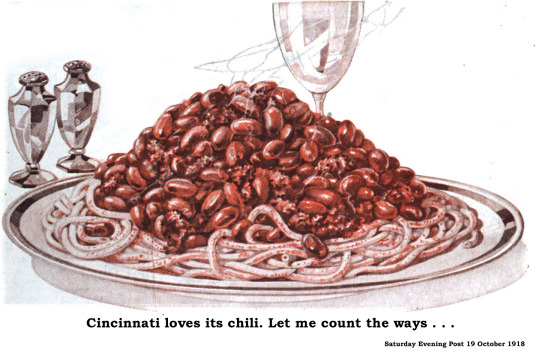
23 notes
·
View notes
Text
Prediction by the late Republican Senator and 1964 GOP presidential candidate Barry Goldwater.

#christian right#christian dominionism#religious right#christian fundamentalism#barry goldwater#republicans#republican party
4 notes
·
View notes
Text

The story of the Catholic priest who got an SR-71 VIP ride and flew at Mach 3.52 breaking the Blackbird Speed Record
The actual unofficial top speed of the SR-71 Blackbird is Mach 3.52. This happened because of the urgings of a Catholic priest!
SR-71 T-Shirts

CLICK HERE to see The Aviation Geek Club contributor Linda Sheffield’s T-shirt designs! Linda has a personal relationship with the SR-71 because her father Butch Sheffield flew the Blackbird from test flight in 1965 until 1973. Butch’s Granddaughter’s Lisa Burroughs and Susan Miller are graphic designers. They designed most of the merchandise that is for sale on Threadless. A percentage of the profits go to Flight Test Museum at Edwards Air Force Base. This nonprofit charity is personal to the Sheffield family because they are raising money to house SR-71, #955. This was the first Blackbird that Butch Sheffield flew on Oct. 4, 1965.
The actual unofficial top speed of the SR-71 Blackbird is Mach 3.52. This happened because of the urgings of a Catholic priest!
SR-71 pilot Tom Alison said, “My God, Padre, what more do you want? I came within 5 degrees of burning up this entire airplane! “What more do you want?”
The Father wanted to make sure that he broke the official record of the fastest speed in the SR-71 that’s what he wanted.
Father Hesburgh was used to asking for a lot and getting it.
According to University of Notre Dame website, Father Theodore Hesburgh, President of the University of Notre Dame, Indiana, was an aviation buff. He was hooked after a flight in a barnstormer’s stunt plane at the age of 10 that his Dad paid five dollars for. In his autobiography, he wrote that He has logged nearly three million miles in the air, flying in supersonic fighter jets such as the F-14 Tomcat, as well as in exotic aircraft such as a Torpedo Bomber, a Weather Plane, and many more. He also broke the sound barrier several times, flew into a volcanic crater, and piloted a naval bomber over the Pacific despite having no formal flight training.
The story of the Catholic priest who got an SR-71 VIP ride and flew at Mach 3.33 breaking the Blackbird Speed Record

Alison on left Hesburgh on right.
But he wanted more.
The ultimate prize would be to fly in the world’s fastest airplane and break the current record. That record was set in 1976 at Mach 3.2.
Hesburgh’s chance came while talking with President Jimmy Carter in the White House.
President Carter was thanking the Roman Catholic priest for his Goodwill accomplishments during a meeting at the White House; he asked Hesburgh ‘Is there anything I could do for you?’ President Carter recalled the moment Hesburgh asked for the favor: ‘I said, “Fr. Hesburgh, it’s not customary for civilians to ride on a top-secret airplane.”
He said, ‘That’s all right. I thought you were Commander-in-Chief.’
The story of the Catholic priest who got an SR-71 VIP ride and flew at Mach 3.33 breaking the Blackbird Speed Record

(Althouhg Wing Commander Shelton’s name was Franklin everybody used to call him Dale)
Two days later, Hesburgh got a call from the Air Force’s chief of staff. He was to report to Beale Air Force Base, CA, to undergo a training regimen and a series of rigorous tests. After passing the physical and psychological examinations administered to astronauts, Hesburgh had to learn how to operate every instrument in the back seat: navigational equipment, radios, and dozens of gauges and meters. He was then put through situational training for various emergency scenarios, including ejection and equipment failure. Father Hesburgh was possibly the oldest VIP to get a ride in the SR-71. He was 61. A close rival for this title would be Senator Barry Goldwater. He was 60 when he got his VIP ride in 1969.
On Feb. 28, 1979, Hesburgh and the SR-71 pilot, Major Tom Alison, prepared for their attempt to break the Blackbird’s speed record.
The priest wanted to push it to the limit.
After cruising at 30,000 feet just under the speed of sound, Allison and Hesburgh dove 5,000 feet and broke the sound barrier. They then turned their nose upwards and rocketed past 80,000 feet, accelerating through Mach 3. As Hesburgh watched the speedometer, the Blackbird pushed past Mach 3.52, breaking the plane’s speed record.

SR-71 print
This print is available in multiple sizes from AircraftProfilePrints.com – CLICK HERE TO GET YOURS. SR-71A Blackbird 61-7972 “Skunkworks”
In his autobiography, Hesburgh said that when he’d landed, he asked Alison if he had pushed the plane as fast as it would go. Alison responded, “My God, Padre, I went within five degrees of burning us up. What more do you want?”
Hesburgh fulfilled a lifelong dream — he set an unofficial airspeed record in the world’s fastest airplane, an SR-71 Blackbird. This became the Father’s proudest accomplishment, a story that he told over and over again to his friends.
This is a truly remarkable story about a man who asked for an almost impossible task and received it!
@Habubrats71 via X
Be sure to check out Linda Sheffield Miller (Col Richard (Butch) Sheffield’s daughter, Col. Sheffield was an SR-71 Reconnaissance Systems Officer) Twitter Page Habubrats SR-71 and Facebook Page Born into the Wilde Blue Yonder for awesome Blackbird’s photos and stories.

9 notes
·
View notes
Text
The Republican Party geared its appeal and program to racism, reaction, and extremism. All people of goodwill viewed with alarm and concern the frenzied wedding at the Cow Palace of the KKK with the radical right. The “best man” at this ceremony was a senator whose voting record, philosophy, and program were anathema to all the hard-won achievements of the past decade.
It was both unfortunate and disastrous that the Republican Party nominated Barry Goldwater as its candidate for President of the United States. In foreign policy Mr. Goldwater advocated a narrow nationalism, a crippling isolationism, and a trigger-happy attitude that could plunge the whole world into the dark abyss of annihilation. On social and economic issues, Mr. Goldwater represented an unrealistic conservatism that was totally out of touch with the realities of the twentieth century. The issue of poverty compelled the attention of all citizens of our country. Senator Goldwater had neither the concern nor the comprehension necessary to grapple with this problem of poverty in the fashion that the historical moment dictated. On the urgent issue of civil rights, Senator Goldwater represented a philosophy that was morally indefensible and socially suicidal. While not himself a racist, Mr. Goldwater articulated a philosophy which gave aid and comfort to the racist. His candidacy and philosophy would serve as an umbrella under which extremists of all stripes would stand. In the light of these facts and because of my love for America, I had no alternative but to urge every Negro and white person of goodwill to vote against Mr. Goldwater and to withdraw support from any Republican candidate that did not publicly disassociate himself from Senator Goldwater and his philosophy.
While I had followed a policy of not endorsing political candidates, I felt that the prospect of Senator Goldwater being President of the United States so threatened the health, morality, and survival of our nation, that I could not in good conscience fail to take a stand against what he represented.
The Autobiography of Martin Luther King Jr.
#MLK#Martin Luther King Jr#Clayborne Carson#The Autobiography of Martin Luther King Jr#1960s#civil rights#civil rights movement#black history#black history month#black lives matter#black history matters#black authors#history#blm#black voices#bipoc#african american#peaceful protests#nonviolent resistance#atypicalreads#noncooperation#passive resistance
5 notes
·
View notes
Photo

The odd thing is, I had those exact two clip-on bowties as a kid.
And what the aitch eee double-hockey sticks is Senator (and one-time presidential candidate) Barry Goldwater doing there?
10 notes
·
View notes
Photo
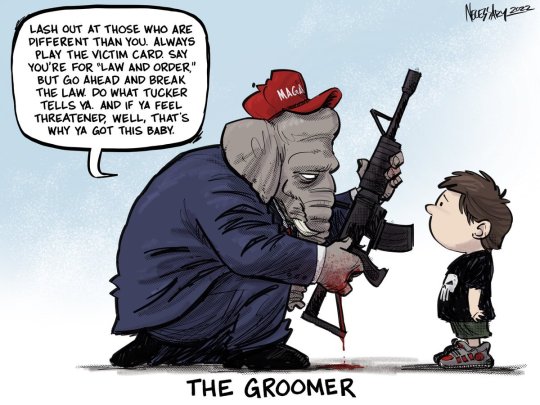
LETTERS FROM AN AMERICAN
May 6, 2023
HEATHER COX RICHARDSON
MAY 6, 2023
For years now, after one massacre or another, I have written some version of the same article, explaining that the nation’s current gun free-for-all is not traditional but, rather, is a symptom of the takeover of our nation by a radical extremist minority. The idea that massacres are “the price of freedom,” as right-wing personality Bill O’Reilly said in 2017 after the Mandalay Bay massacre in Las Vegas, in which a gunman killed 60 people and wounded 411 others, is new, and it is about politics, not our history.
The Second Amendment to the Constitution, on which modern-day arguments for widespread gun ownership rest, is one simple sentence: “A well regulated militia, being necessary for the security of a free state, the right of the people to keep and bear arms, shall not be infringed.” There’s not a lot to go on about what the Framers meant, although in their day, to “bear arms” meant to be part of an organized militia.
As the Tennessee Supreme Court wrote in 1840, “A man in the pursuit of deer, elk, and buffaloes might carry his rifle every day for forty years, and yet it would never be said of him that he had borne arms; much less could it be said that a private citizen bears arms because he has a dirk or pistol concealed under his clothes, or a spear in a cane.”
Today’s insistence that the Second Amendment gives individuals a broad right to own guns comes from two places.
One is the establishment of the National Rifle Association in New York in 1871, in part to improve the marksmanship skills of American citizens who might be called on to fight in another war, and in part to promote in America the British sport of elite shooting, complete with hefty cash prizes in newly organized tournaments. Just a decade after the Civil War, veterans jumped at the chance to hone their former skills. Rifle clubs sprang up across the nation.
By the 1920s, rifle shooting was a popular American sport. “Riflemen” competed in the Olympics, in colleges, and in local, state, and national tournaments organized by the NRA. Being a good marksman was a source of pride, mentioned in public biographies, like being a good golfer. In 1925, when the secretary of the NRA apparently took money from ammunition and arms manufacturers, the organization tossed him out and sued him.
NRA officers insisted on the right of citizens to own rifles and handguns but worked hard to distinguish between law-abiding citizens who should have access to guns for hunting and target shooting and protection, and criminals and mentally ill people, who should not. In 1931, amid fears of bootlegger gangs, the NRA backed federal legislation to limit concealed weapons; prevent possession by criminals, the mentally ill and children; to require all dealers to be licensed; and to require background checks before delivery. It backed the 1934 National Firearms Act, and parts of the 1968 Gun Control Act, designed to stop what seemed to be America’s hurtle toward violence in that turbulent decade.
But in the mid-1970s a faction in the NRA forced the organization away from sports and toward opposing “gun control.” It formed a political action committee (PAC) in 1975, and two years later it elected an organization president who abandoned sporting culture and focused instead on “gun rights.”
This was the second thing that led us to where we are today: leaders of the NRA embraced the politics of Movement Conservatism, the political movement that rose to combat the business regulations and social welfare programs that both Democrats and Republicans embraced after World War II.
Movement Conservatives embraced the myth of the American cowboy as a white man standing against the “socialism” of the federal government as it sought to level the economic playing field between Black Americans and their white neighbors.
Leaders like Arizona Senator Barry Goldwater personified the American cowboy, with his cowboy hat and opposition to government regulation, while television Westerns showed good guys putting down bad guys without the interference of the government.
In 1972 the Republican platform had called for gun control to restrict the sale of “cheap handguns,” but in 1975, as he geared up to challenge President Gerald R. Ford for the 1976 presidential nomination, Movement Conservative hero Ronald Reagan took a stand against gun control. In 1980, the Republican platform opposed the federal registration of firearms, and the NRA endorsed a presidential candidate—Reagan—for the first time.
When President Reagan took office, a new American era, dominated by Movement Conservatives, began. And the power of the NRA over American politics grew.
In 1981 a gunman trying to kill Reagan shot and paralyzed his press secretary, James Brady, and wounded Secret Service agent Tim McCarthy and police officer Thomas Delahanty. After the shooting, then-representative Charles Schumer (D-NY) introduced legislation that became known as the Brady Handgun Violence Prevention Act, or the Brady Bill, to require background checks before gun purchases. Reagan, who was a member of the NRA, endorsed the bill, but the NRA spent millions of dollars to defeat it.
After the Brady Bill passed in 1993, the NRA paid for lawsuits in nine states to strike it down. Until 1959, every single legal article on the Second Amendment concluded that it was not intended to guarantee individuals the right to own a gun. But in the 1970s, legal scholars funded by the NRA had begun to argue that the Second Amendment did exactly that.
In 1997, when the Brady Bill cases came before the Supreme Court as Printz v. United States, the Supreme Court declared parts of the measure unconstitutional.
Now a player in national politics, the NRA was awash in money from gun and ammunition manufacturers. By 2000 it was one of the three most powerful lobbies in Washington. It spent more than $40 million on the 2008 election. In that year, the landmark Supreme Court decision of District of Columbia v. Heller struck down gun regulations and declared that the Second Amendment protects an individual’s right to keep and bear arms.
Increasingly, NRA money backed Republican candidates. In 2012 the NRA spent $9 million in the presidential election, and in 2014 it spent $13 million. Then, in 2016, it spent over $50 million on Republican candidates, including more than $30 million on Trump’s effort to win the White House. This money was vital to Trump, since many other Republican super PACs refused to back him. The NRA spent more money on Trump than any other outside group, including the leading Trump super PAC, which spent $20.3 million.
The unfettered right to own and carry weapons has come to symbolize the Republican Party’s ideology of individual liberty. Lawmakers and activists have not been able to overcome Republican insistence on gun rights despite the mass shootings that have risen since their new emphasis on guns.
Tonight, I am, once again, posting yet another version of this article.
—
LETTERS FROM AN AMERICAN
HEATHER COX RICHARDSON
#Heather Cox Richardson#Letters From An American#gun violence#right wing propaganda#NRA#history#Corrupt SCOTUS#money in politics#guns#Brady Bill#gun control
12 notes
·
View notes
Text
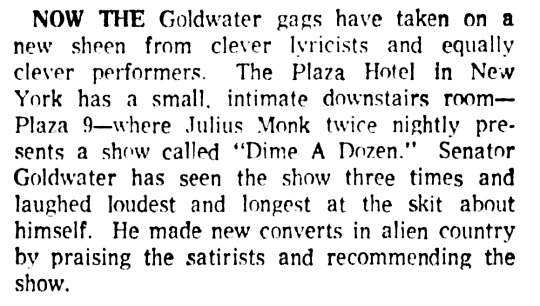
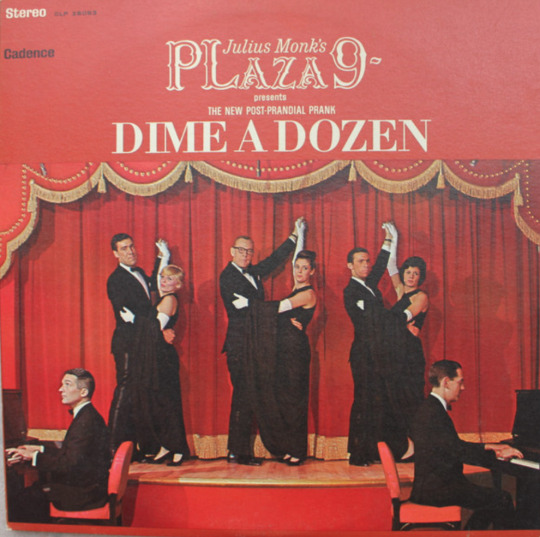


1964.
Barry Goldwater attended Julius Monk's Dime a Dozen, a satirical sketch comedy revue that parodied the Arizona Senator.
Goldwater attended the show and praised it despite the fact it mocked him. "I don't think I've been as thoroughly entertained in years," said Goldwater. "It's exhilarating and exciting."
5 notes
·
View notes